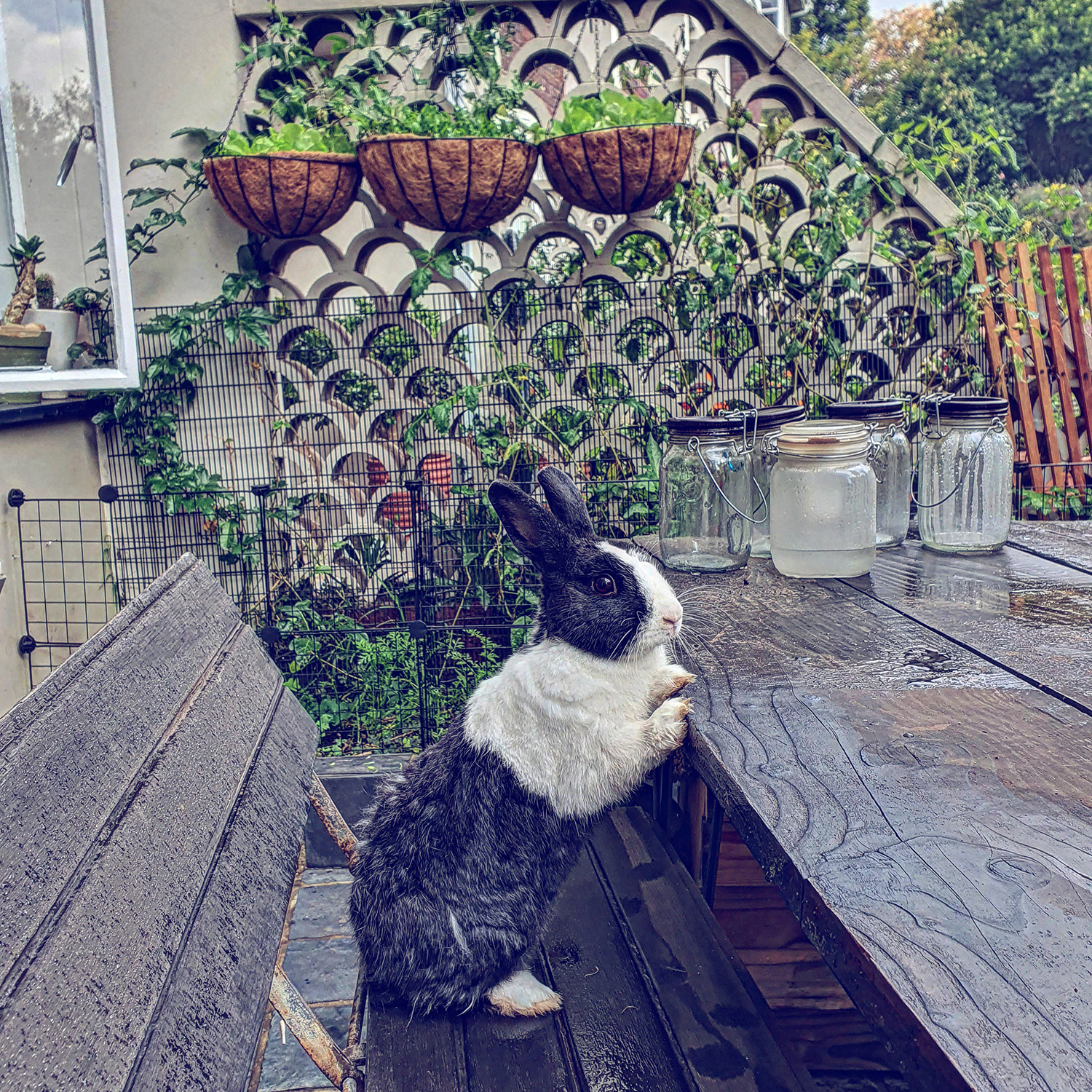1. A Carrier
| You don’t need the most expensive, imported, branded, colour coded pet voyager. A sturdy hardshell picnic basket would also work. |
2. What your INDOOR RABBIT needs
| A room or section of a room cordoned off with a pet exercise pen, kiddies playpen or a makeshift screen if you are handy. If the pen is high enough, you won’t need to add a cover and your bunny will be happier. |
| A plastic liner to protect your floors/carpets until your bunny has been litter-trained. |
| A plastic container for their hay. It can be an inexpensive tray with high sides, a cat litter tray with an edge or a cat litterbox. See what your rabbit prefers |
| A water bowl that cannot tip or can be attached to the playpen. The jury is out on whether stainless steel or plastic bowls, or water dispensers are the best. (Mine love this water dispenser. Reney.) |
| Unlimited, 24 hour access to oat hay (or teff, eragrostis, rye, but oat is always the favourite). You can just fill a big plastic container with hay and they will eat the hay, but also use one corner of the container to pee/poo. They like to forage. If that grosses you out, invest in a store-bought feeder above the litterbox, or make your own out of cardboard boxes. |
| An old blanky to sleep on. Be warned, they will chew it. (Mine has taken to memory foam mats, which is harder to chew and easy to clean. Reney.) |
| Entertainment as they are inquisitive. This includes tunnels to run through. You can buy plastic collapsible tunnels or use a long cardboard box that your soundbar came in. They love stacking cups filled with oats/pellets, old toilet roll cores filled with treats, willow rings to chew on and solid plastic kiddies toys to throw around. |
| Bunny-proofing tips: https://arcrabbitassist.com/how-to-bunny-proof-your-house |
3. What your OUTDOOR RABBIT needs
| As rabbits are prey animals, keeping them outdoors comes with some issues. They need to be protected, but also feel protected. |
| Whether they free roam your garden of they live in an enclosure, you must be certain they will not fall prey to cats/eagles/hawks/genets, all common to Joburg. If they free roam, they must do so with supervision. If they are in an enclosure, make sure it cannot be breached |
| All perimeter walls must be secured. Built walls normally have a foundation, so rabbits cannot dig out. Pre-cast walls do not have a foundation, so dig a trench along the wall, put some galvanised mesh down and compact the soil |
| Enclosure floors and walls can also be secured using galvanised steel mesh. They will chew through plastic. For the floors, cover the mesh with a solid layer of soil so they cannot hurt their paws. You can even grow grass on top of it. |
| Check out the gaps underneath gates. The same galvanised steel mesh can be attached to gates to prevent them from slipping underneath. |
| Their hay, pellets, greens must be kept dry and safe. For free-roaming bunnies, perhaps invest in a wooden hutch for that purpose. It will also give them shelter, and a hidey-hole to play in. |
| If they free roam your garden, consider bringing them in at night or at least putting them in a safe enclosure. |
| For free roaming bunnies, consider a pool cover or a fence around your pool, because when scared a rabbit can run into your pool and drown…even if they have never been interested in going close to the pool. |




